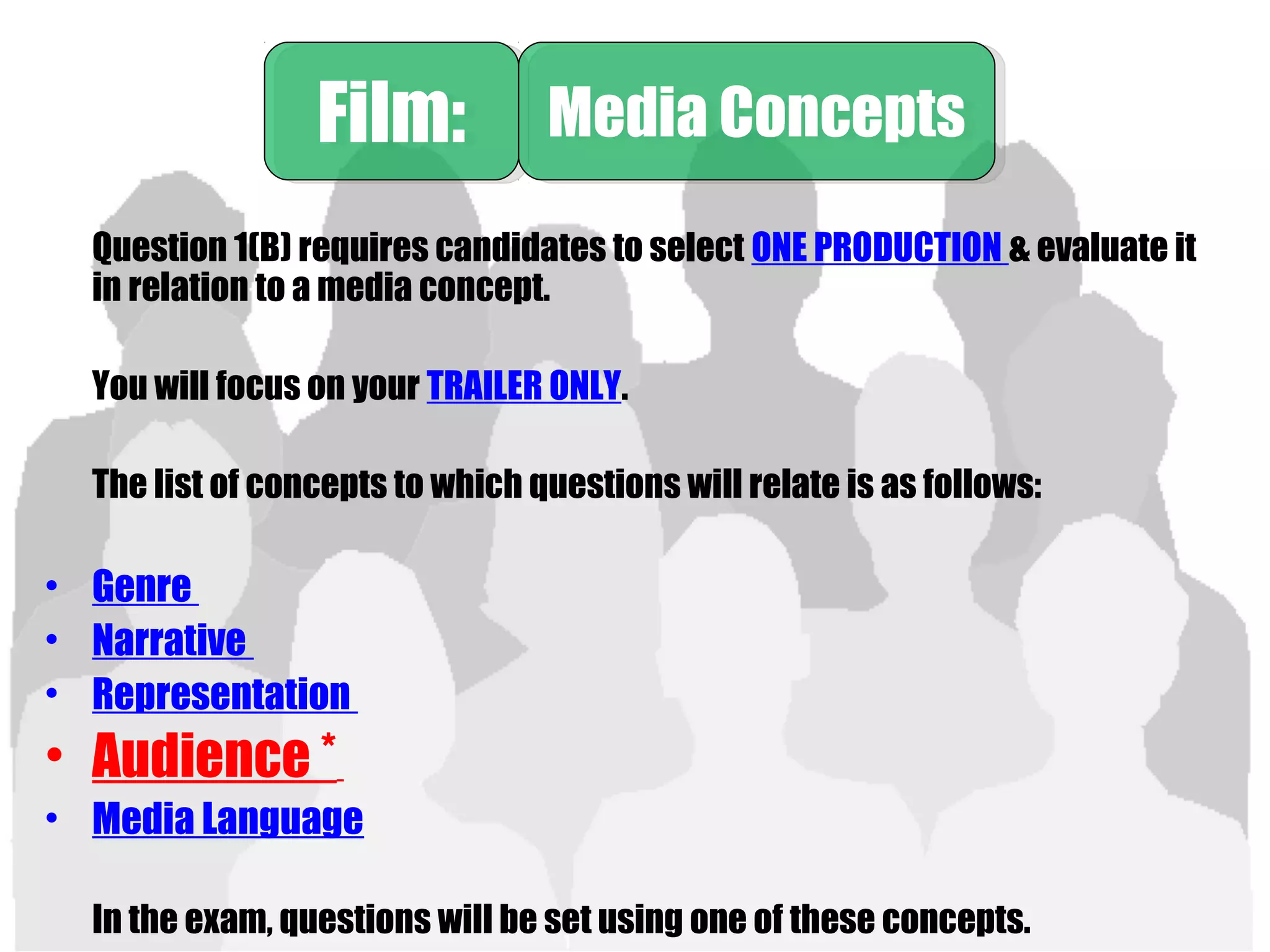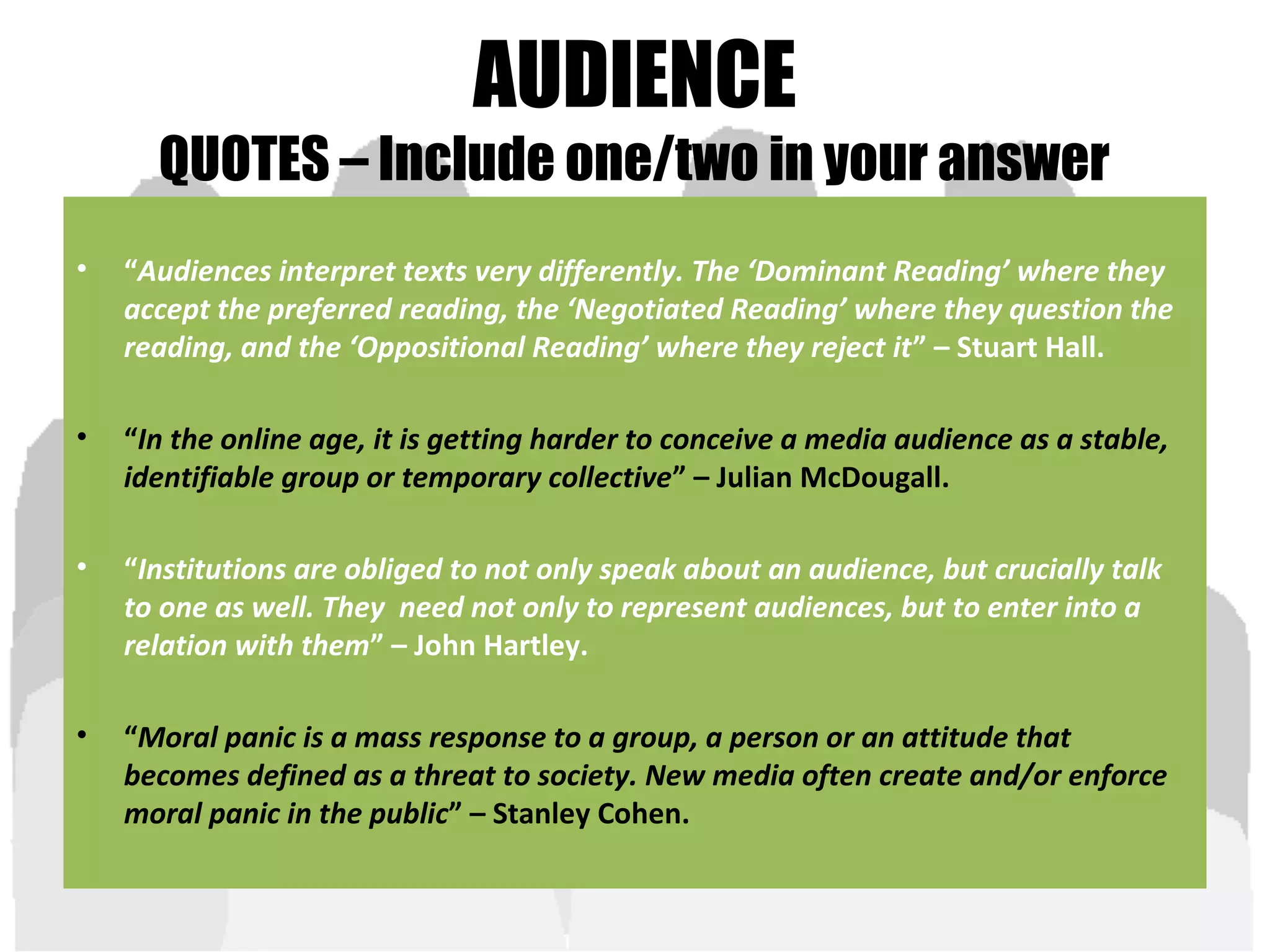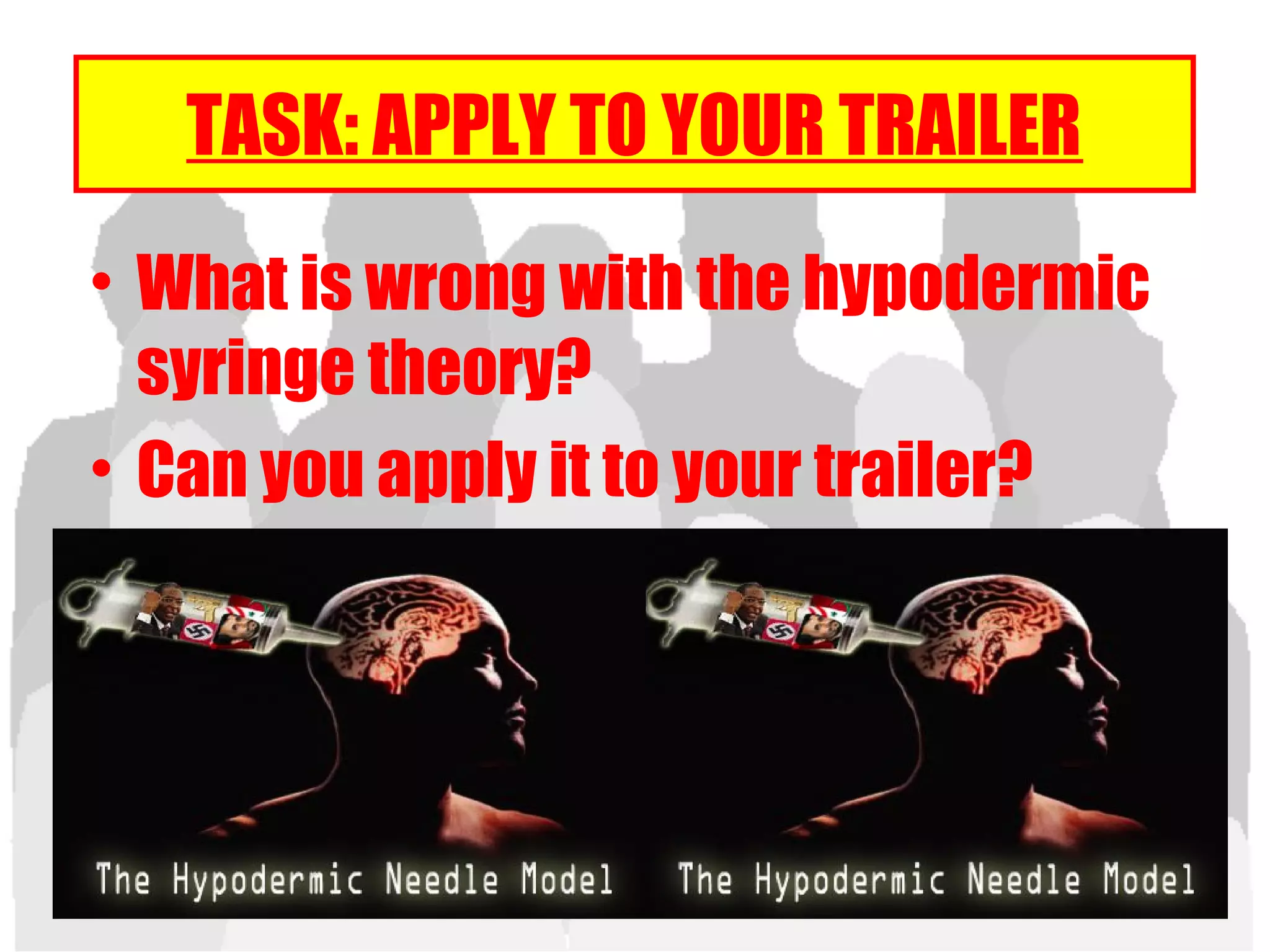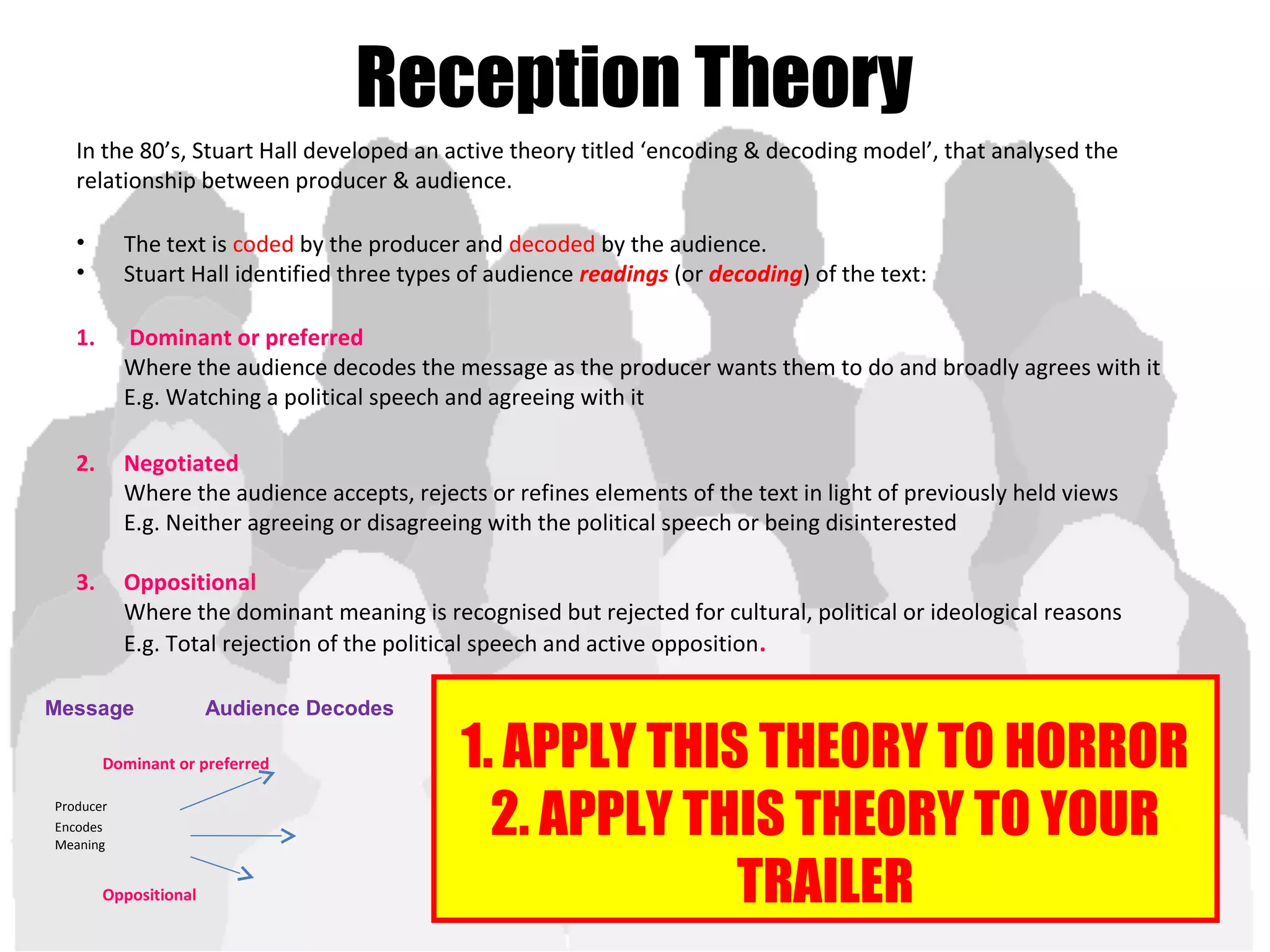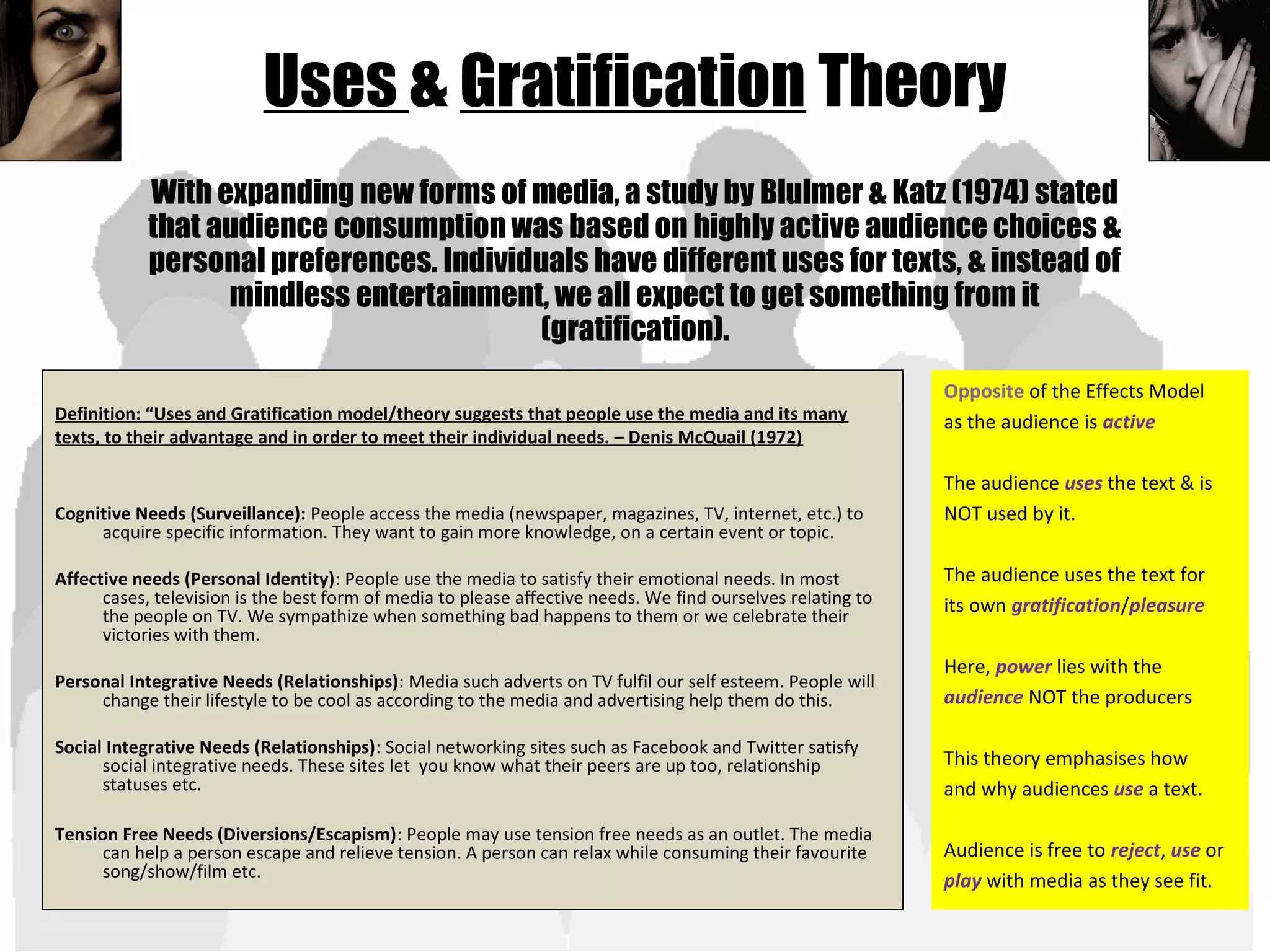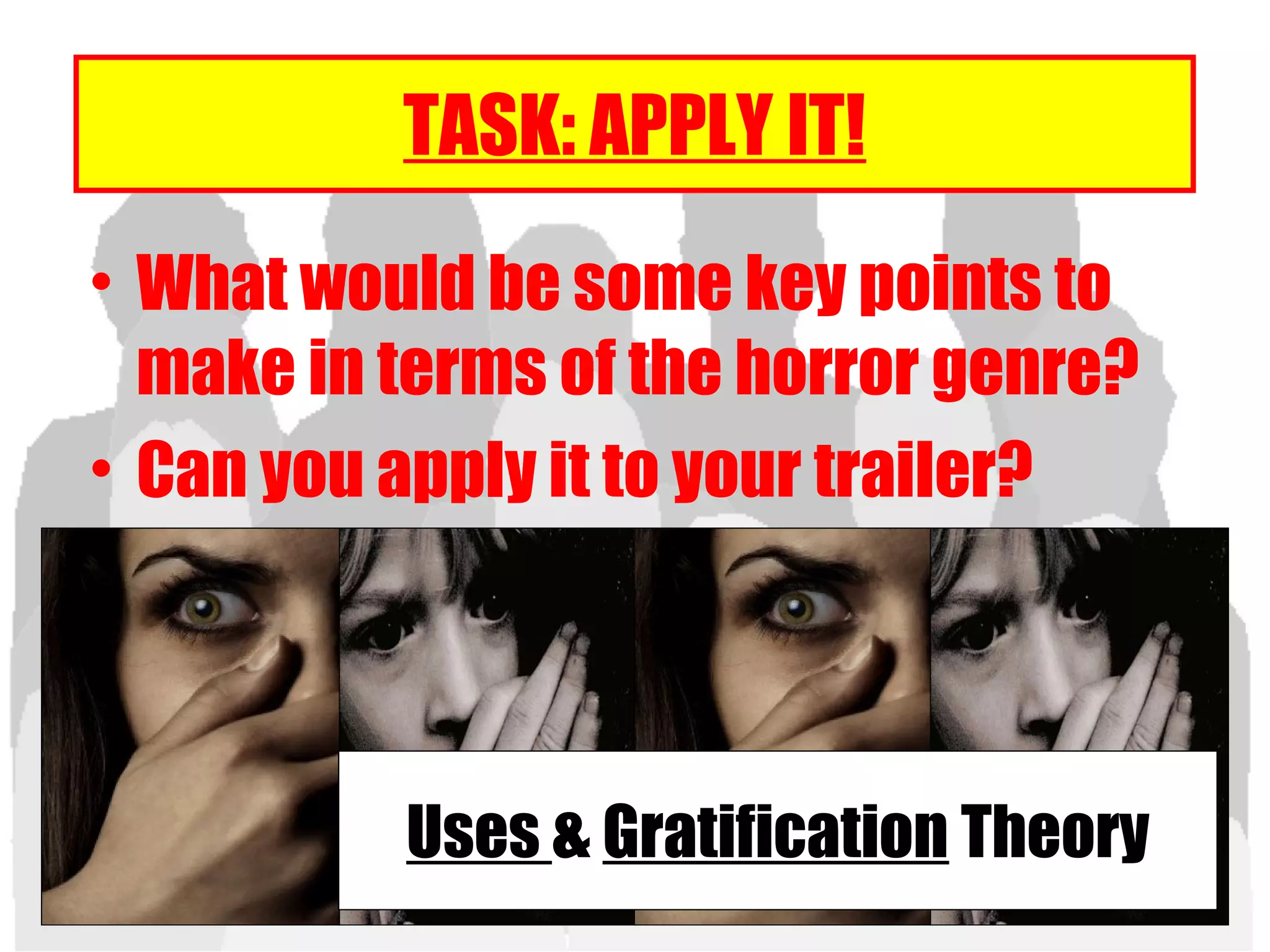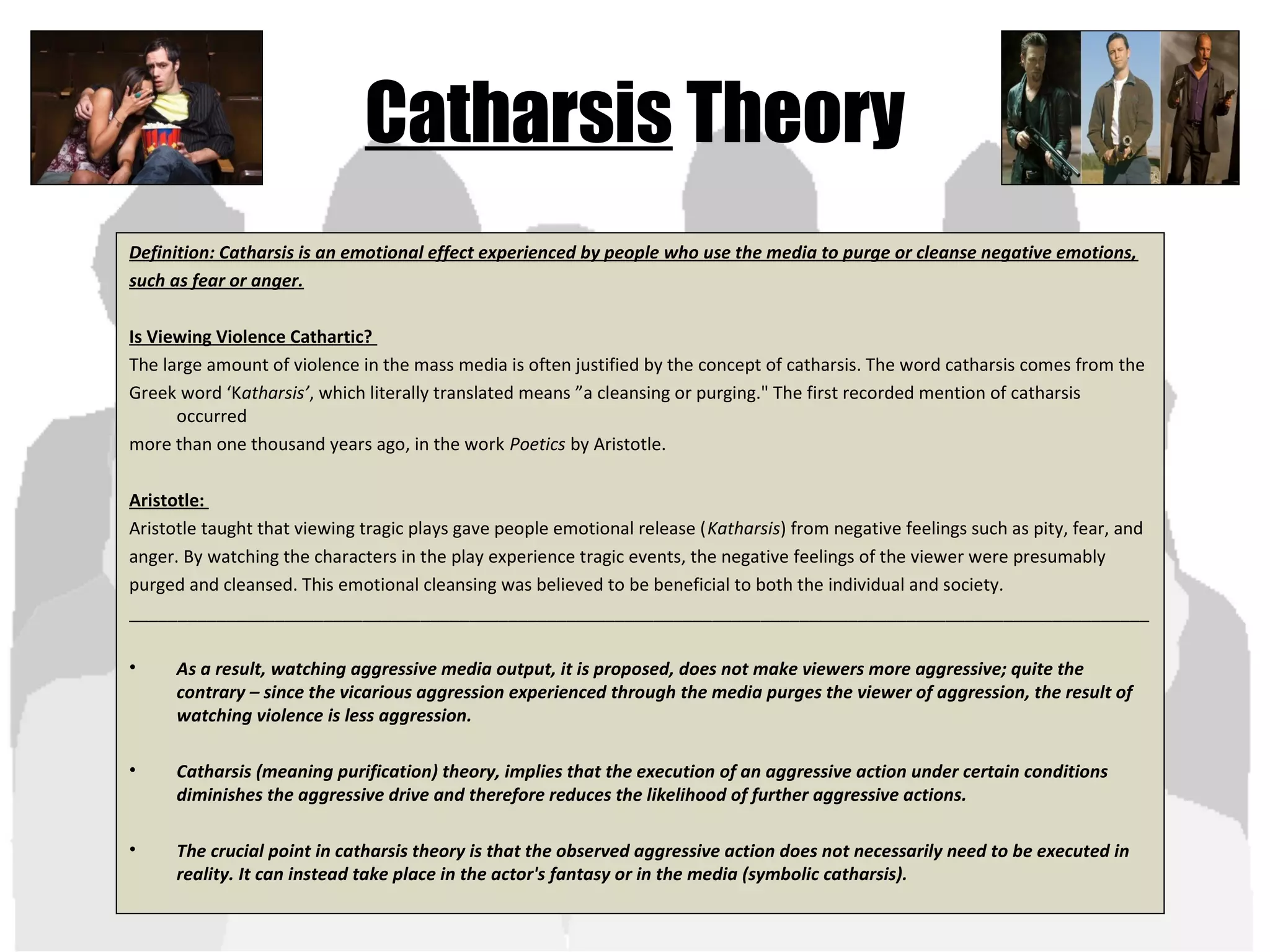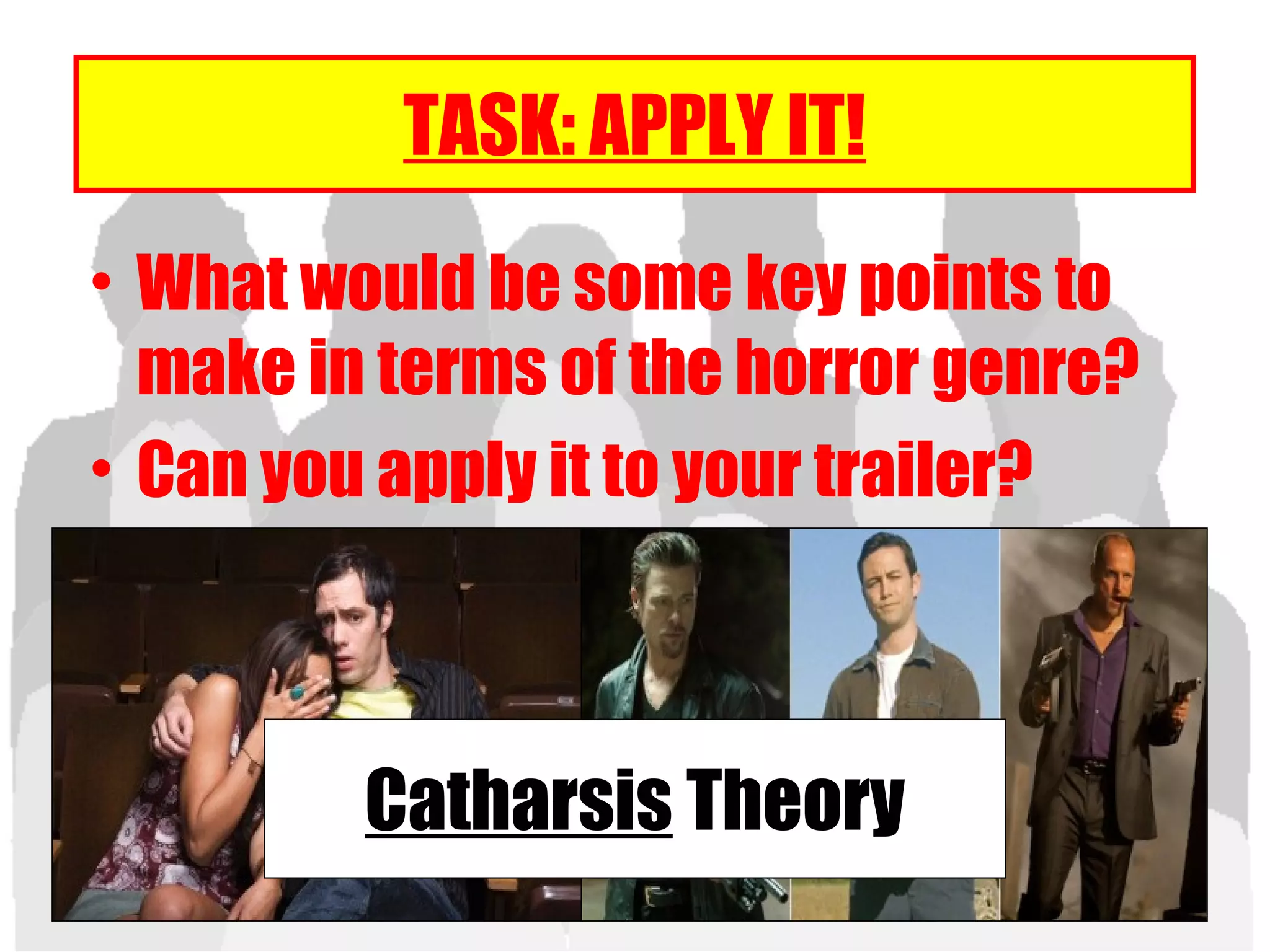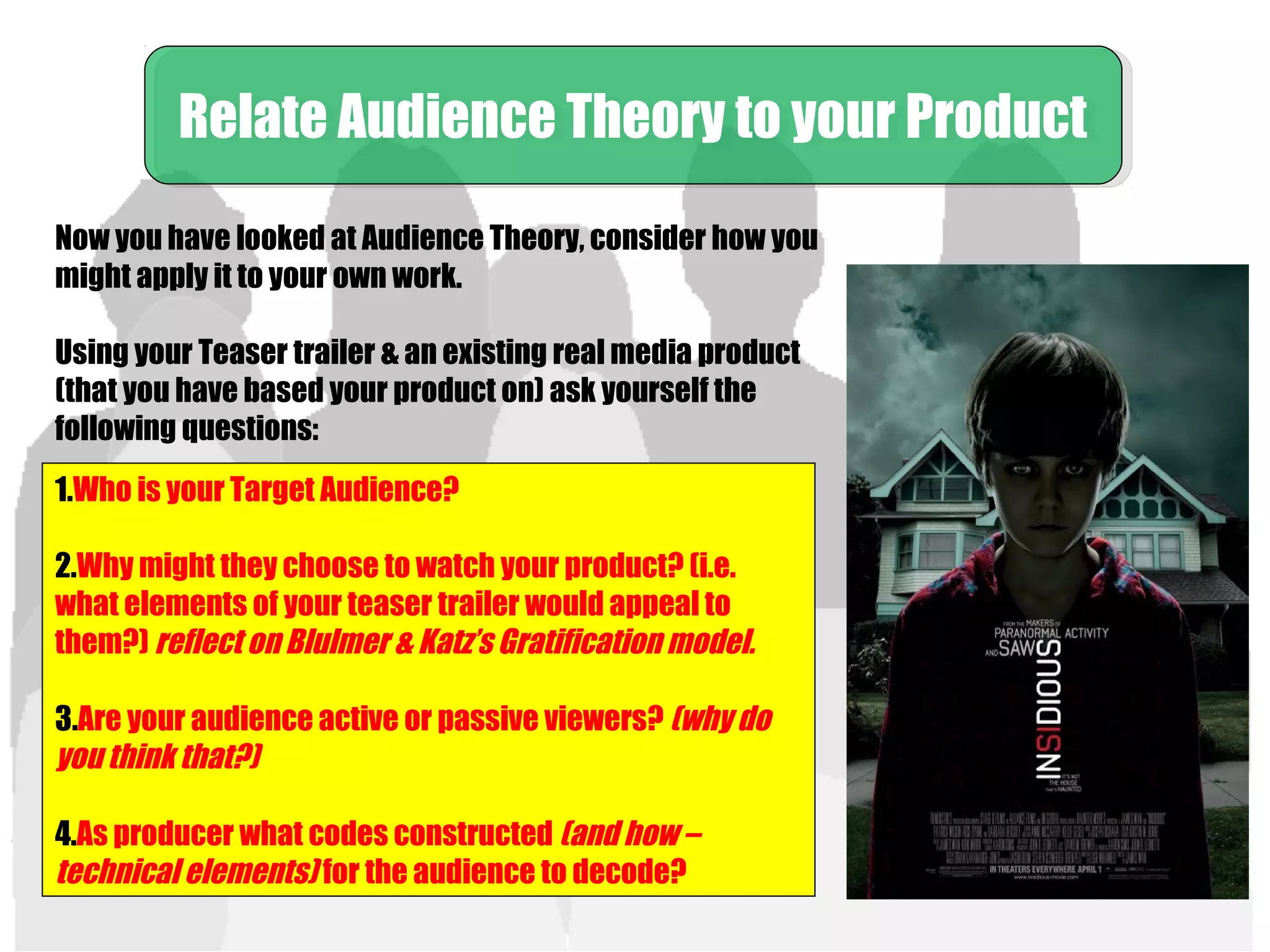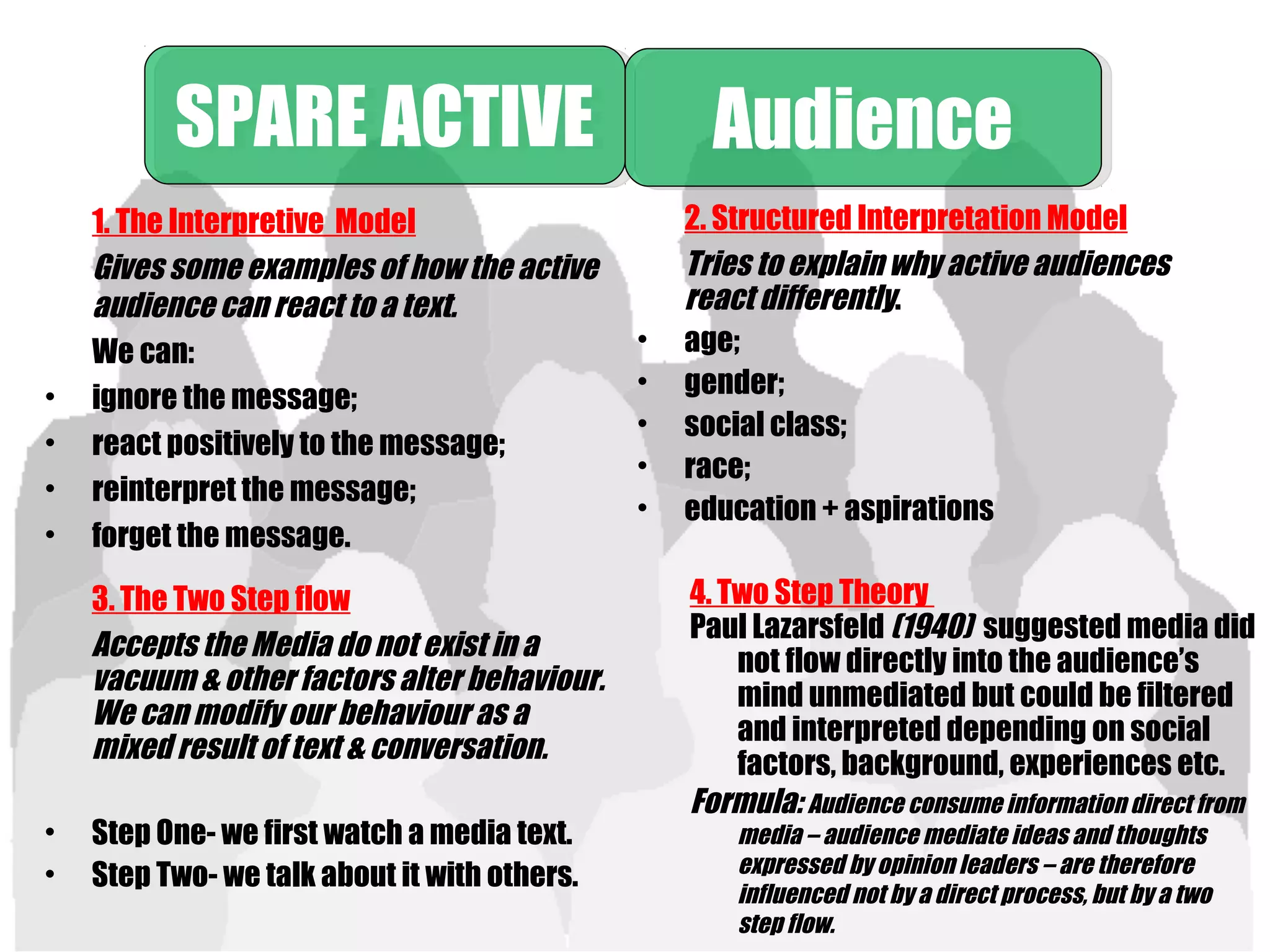This document provides information and tasks related to evaluating a media production for a critical perspectives exam. It discusses several key concepts that will be covered, including genre, narrative, representation, audience, and media language. Students are asked to answer questions about their project, target audience, and the meaning of their trailer. Several theories related to media effects and audiences are also summarized, including mass audience theory, active audience theory, uses and gratification theory, cultivation theory, desensitization theory, and the hypodermic syringe model. Students are asked to apply these theories to their trailer and the horror genre.

